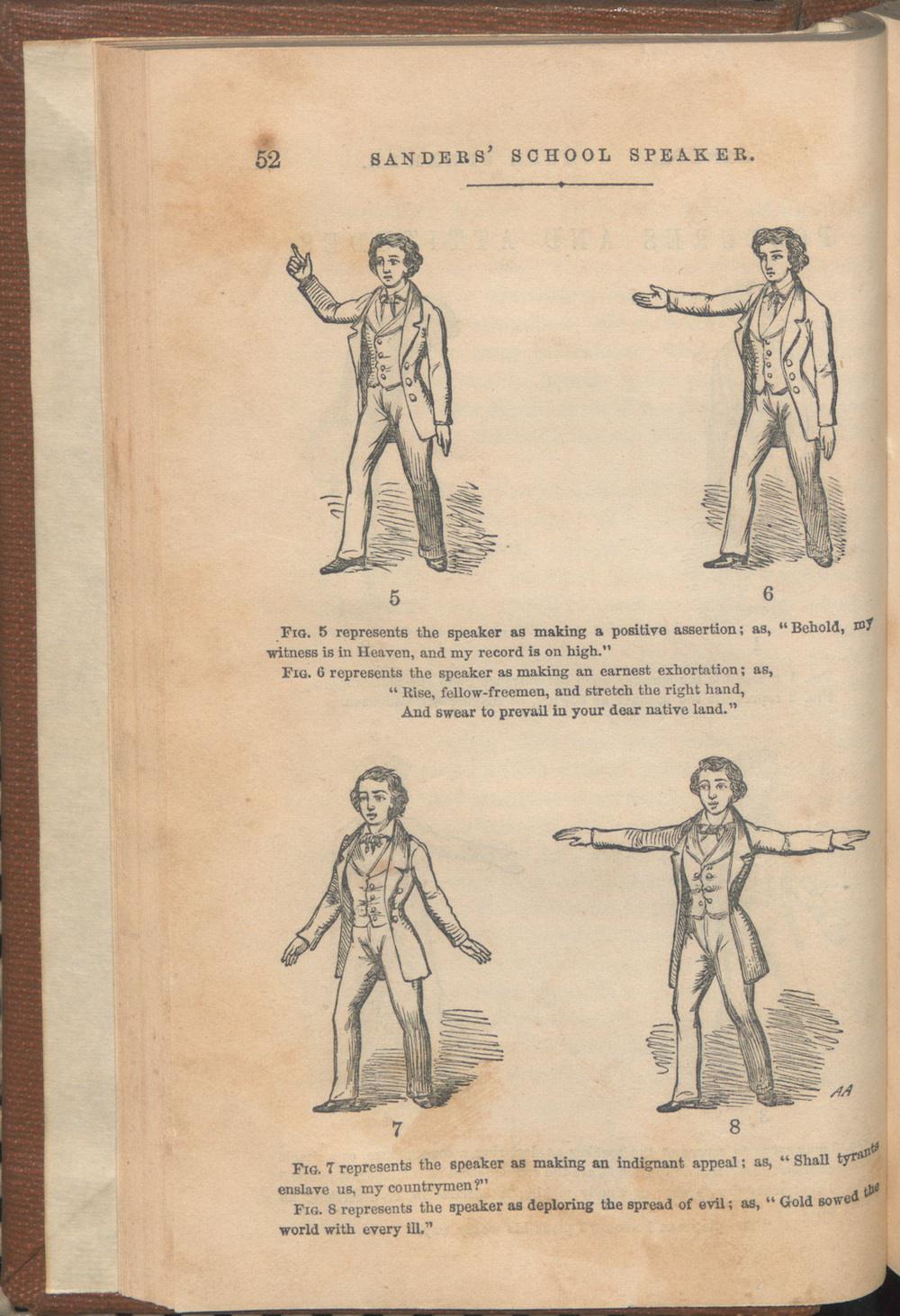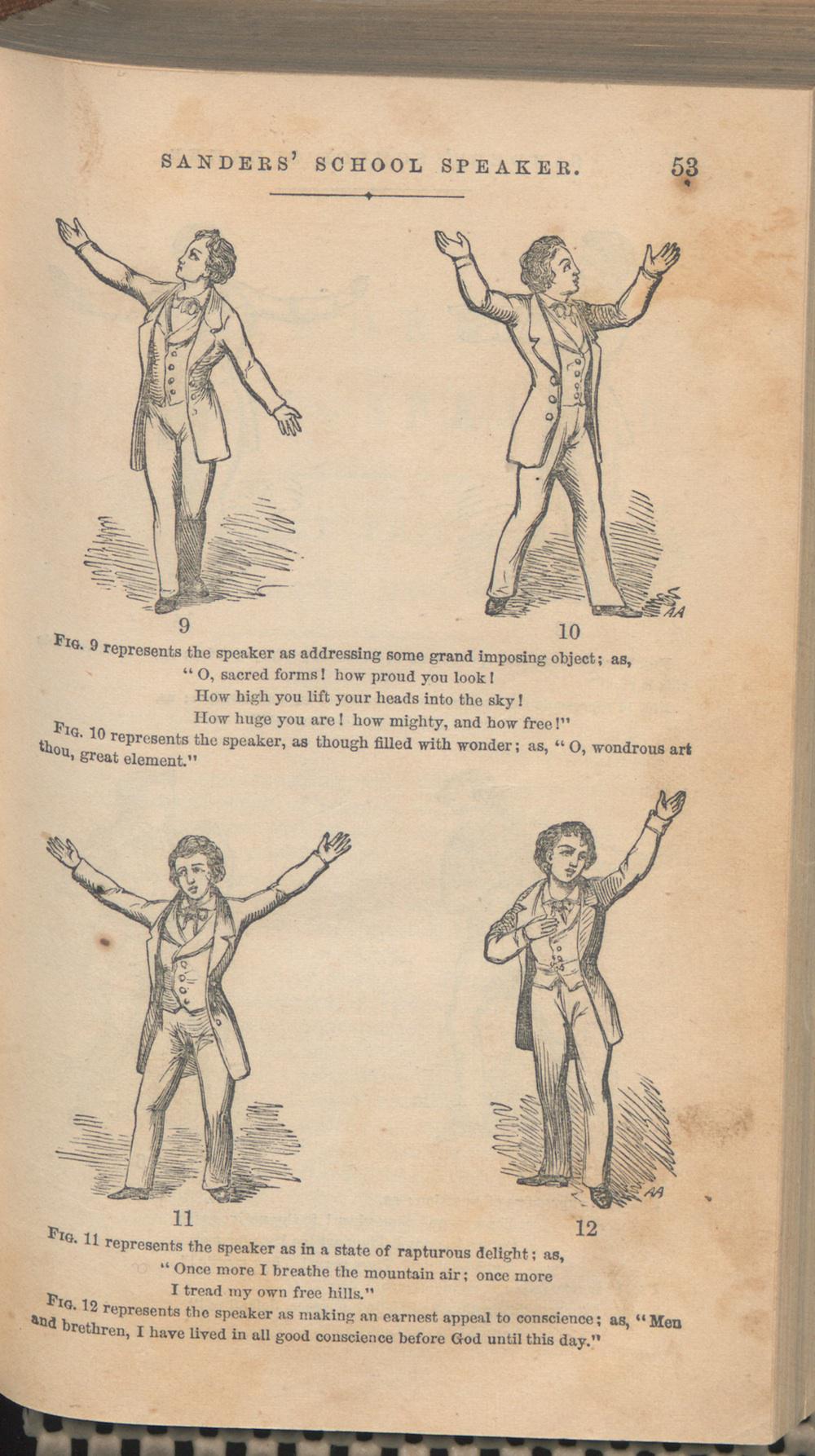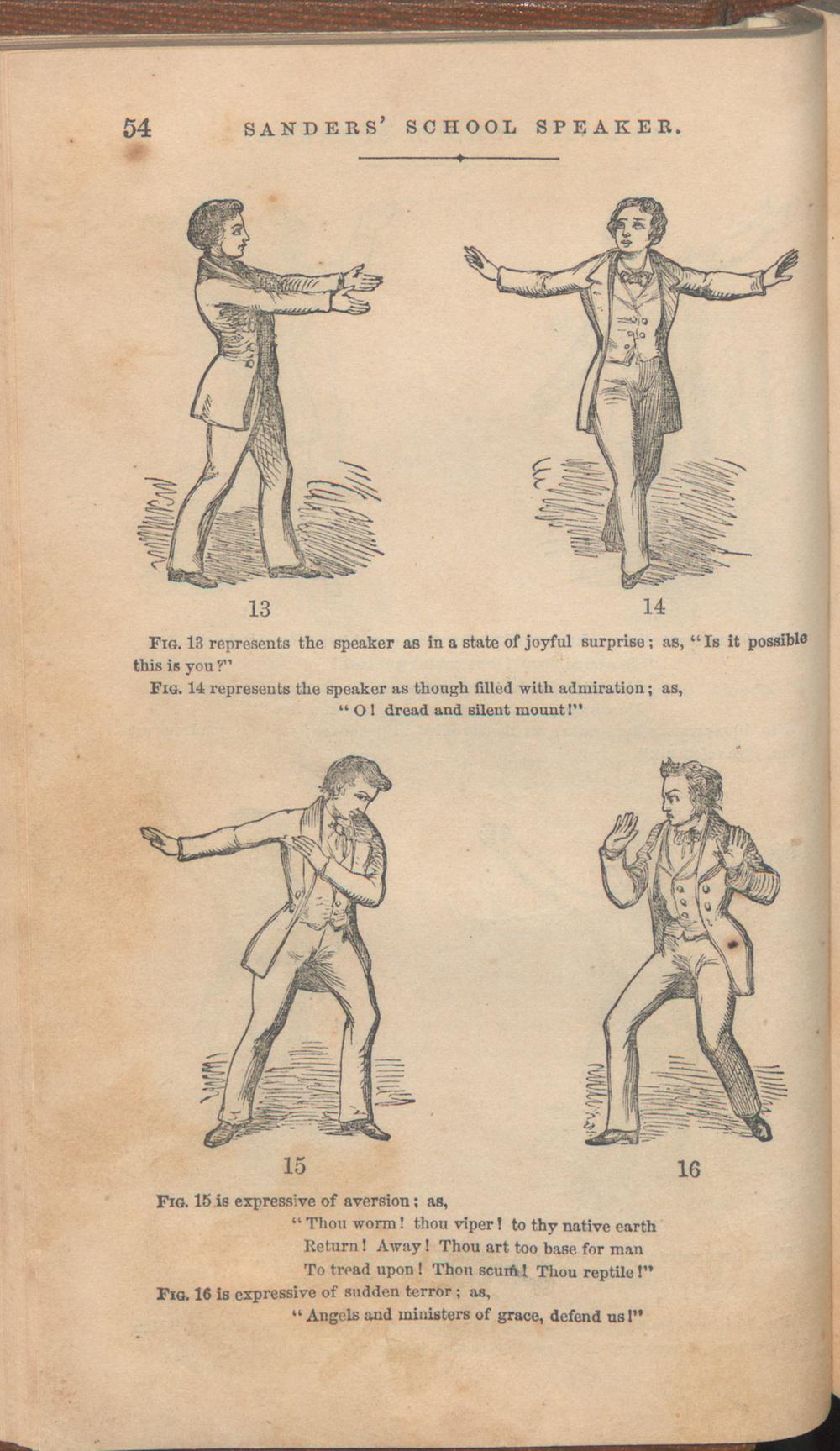The Vault is Slate’s history blog. Like us on Facebook, follow us on Twitter @slatevault, and find us on Tumblr. Find out more about what this space is all about here.
These postures and attitudes were meant for 19th-century students to use when practicing speech-giving. Presented as illustrations in Charles W. Sanders’ Sanders’ School Speaker: A Comprehensive Course of Instruction in the Principles of Oratory; With Numerous Exercises for Practice in Declamation, the figures advised students how to use their bodies to heighten the effect of their delivery.
Sanders’ 1857 book (viewable via the Internet Archive) is only one of many such elocution primers available for classroom use in the 19th century, when oratory was quite commonly included in curricula. Sanders’ compendium contains a short section on principles of elocution (how to modulate speech; when to pause) and a section on gesture, illustrated by these images. The bulk of the book is filled with “Exercises in Declamation”: texts that the student could memorize, then use to practice these principles.
Sanders protested in his introduction to the book that true eloquence was not just a matter of silver-tongued trickery: “The prime element in the constitution of the great orator is, and can be, found only in the good man.” To that end, he wrote, he had included only texts that would cultivate “high moral character” in the student speaker. Some of his choices of authors, at the time of the book’s publication the late 1850s, definitively marked the book as Northern: Charles Sumner; Cassius M. Clay; William H. Seward; Lydia Maria Child.
I first saw this book on the Tumblr of Special Collections, Archives, and Rare Books at the University of Missouri Libraries, which compiled the Sanders Postures and Attitudes from their 1863 edition of the primer into entertaining animated GIFs.

Courtesy of Special Collections and Rare Books, University of Missouri Libraries

Courtesy of Special Collections and Rare Books, University of Missouri Libraries

Courtesy of Special Collections and Rare Books, University of Missouri Libraries

Courtesy of Special Collections and Rare Books, University of Missouri Libraries
Read more in Slate: